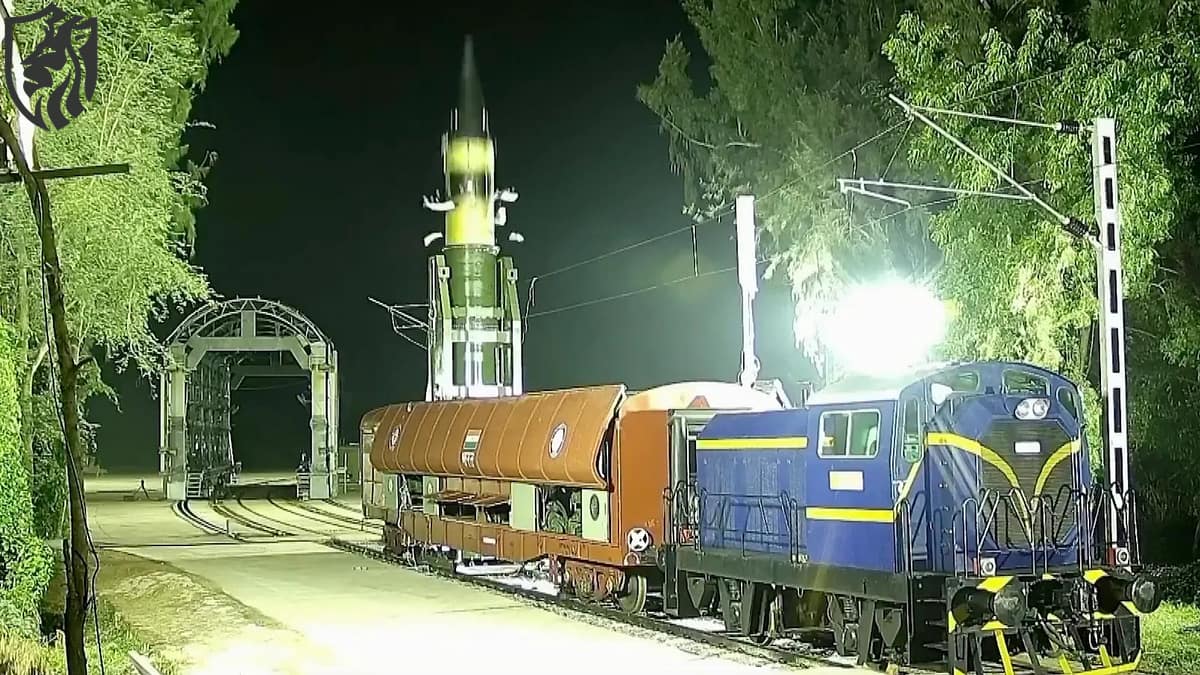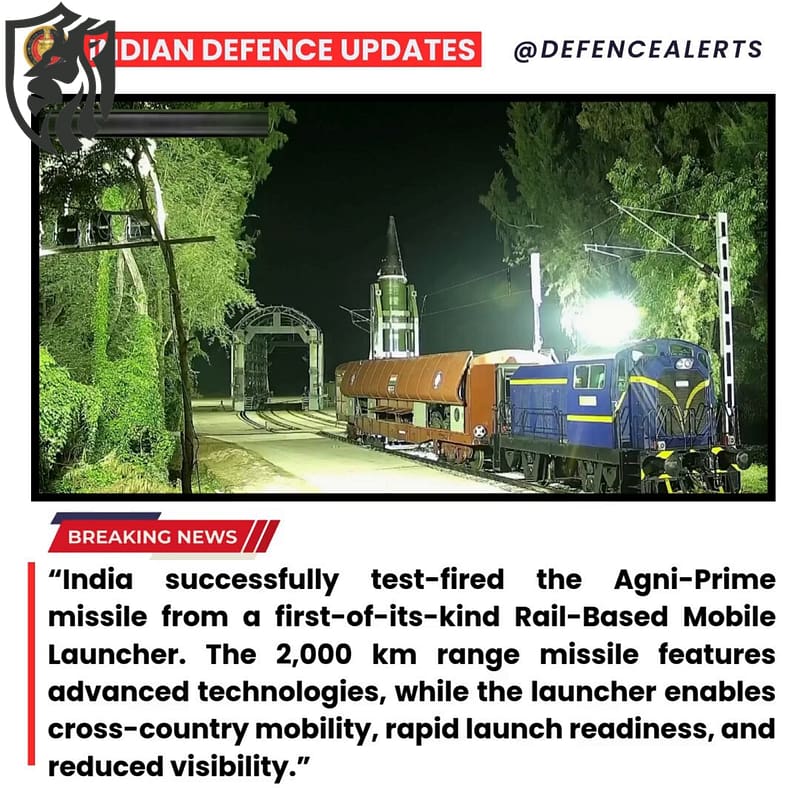
Agni-Prime Rail Launch
Why the Agni-Prime rail launch matters
India has conducted a “first-of-its-kind” on-the-move test of its nuclear-capable Agni-Prime from a train. The Agni-Prime rail launch shifts focus from the missile to the platform. Because the rail network spans nearly 70,000 km, India can disperse assets rapidly, and thus complicate adversary targeting. Moreover, canisterised basing improves safety, storage, and reaction time.
Crucially, the Agni-Prime rail launch enhances second-strike credibility. Trains can reposition overnight, use tunnels for concealment, and stage in remote areas. Therefore, any pre-emptive strike must account for a moving, uncertain target set, which is difficult and expensive.
What the test demonstrated
The Agni-Prime rail launch confirmed three operational advantages:
- Mobility and deception. Trains blend with civilian traffic and can change routes quickly. As a result, satellites and aircraft face a harder detection problem.
- On-the-move readiness. A canisterised round on a railcar reduces setup time, which shortens the decision-to-launch cycle.
- Network depth. The vast rail grid offers many firing points, which increases survivability and complicates enemy planning.

Agni-Prime at a glance
The Agni-Prime rail launch used an intermediate-range ballistic missile with a reach of about 2,000 km. Agni-P is a two-stage, solid-fuel system with composite motor casings, a canisterised launcher, and modern guidance for higher accuracy. Consequently, the design is lighter than legacy Agni-I/II families, yet delivers credible regional coverage.
Likely employment concept
During a crisis, Agni-Prime rail launch units could disperse across multiple corridors, shelter in tunnels, and rotate between pre-surveyed firing sites. Because canisterised systems need minimal site preparation, crews can execute a rapid “shoot-and-scoot,” then re-locate before counter-battery or air attacks arrive.
How rail basing changes the deterrence calculus
The Agni-Prime rail launch underscores a classic Cold War idea: mobility equals survivability. The Soviet RT-23 “Molodets” rail ICBMs pioneered this model, while the United States explored the Peacekeeper Rail Garrison. Today, Russia and China retain or trial mobile basing. India’s step therefore aligns with established survivability principles: dispersion, deception, and redundancy.
Furthermore, the Agni-Prime rail launch complements road-mobile and sea-based legs. A mixed posture complicates adversary ISR because each basing mode imposes distinct detection and interdiction challenges. Consequently, an opponent must invest in broader surveillance coverage, which is costly and uncertain.
Benefits vs. constraints
The Agni-Prime rail launch delivers clear benefits—mobility, concealment, and distributed storage—yet it is not without trade-offs.
Strengths
- Wider firing options across the national network.
- Shorter reaction timelines from canisterised readiness.
- Improved peacetime handling and life-cycle maintenance.

Constraints
- Dependence on track availability and rail traffic control.
- Potential vulnerability to track sabotage during war.
- Precision geodesy from moving platforms is demanding.
Even so, most analysts judge the Agni-Prime rail launch benefits to outweigh the risks because dispersion directly boosts force survival.
Strategic signalling and regional impact
The Agni-Prime rail launch signals maturing command-and-control, survey, and logistics skills. It also suggests India aims to field flexible, scalable deterrence rather than pure silo or road dependence. Neighbours must therefore assume wider, shifting launch baskets and plan for more resilient Indian strike options.
Additionally, the Agni-Prime rail launch supports crisis stability. If second-strike assets can ride out a first blow, leaders face less pressure to “use-or-lose.” That dynamic, in turn, reduces incentives for precipitous escalation.
What to watch next
Following the Agni-Prime rail launch, expect validation of repeatable procedures: route planning, camouflage, secure communications, and site surveying. We should also watch integration with Strategic Forces Command drills and further canister improvements. Finally, interfaces with satellite navigation, terrain databases, and terminal guidance could tighten accuracy from austere rail stops.






